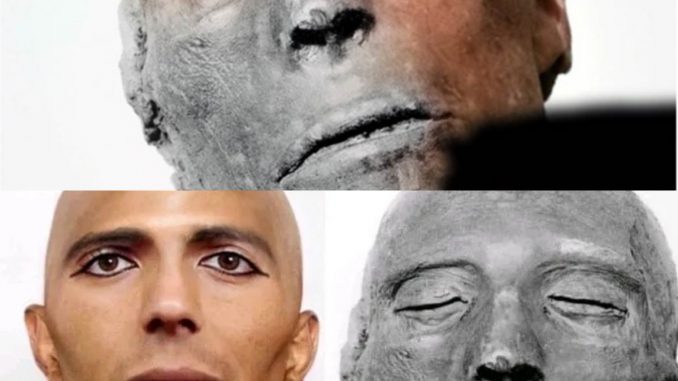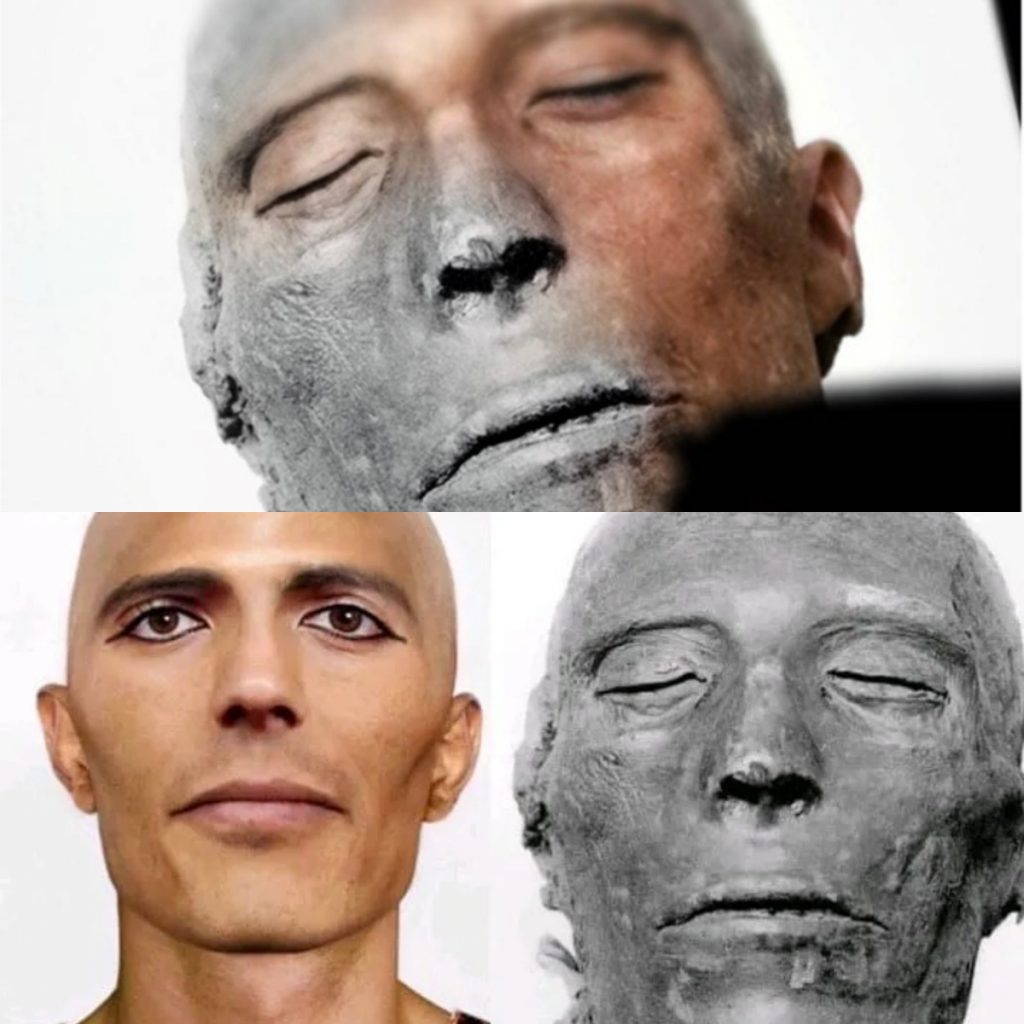
In the annals of ancient Egyptian history, the pharaohs of the New Kingdom stand as titans of power and legacy, their reigns immortalized in the grandeur of temples and monuments that dot the Nile Valley. Among these illustrious rulers, one figure looms large—King Seti I, father of the legendary King Ramses II and a prominent monarch of the 19th Dynasty. Now, centuries after his passing, modern science and technology offer us a glimpse into the face of this ancient king through the reconstruction of his facial features.
King Seti I, also known as Seti the First, ascended to the throne of Egypt around 1294 BC, following the reign of his father, King Ramses I. During his rule, Egypt experienced a period of prosperity and expansion, marked by military campaigns, architectural achievements, and cultural flourishing. Seti’s reign laid the foundation for the golden age of his son, Ramses II, who would go on to become one of the most famous pharaohs in Egyptian history.

The mummy of King Seti I was discovered in the famous tomb known as KV17 in the Valley of the Kings, near Luxor, in 1817 by Giovanni Battista Belzoni, an Italian explorer and archaeologist. Despite the passage of millennia, the mummy of Seti I remained remarkably well-preserved, allowing modern scientists and Egyptologists to study it in detail.
Using advanced forensic techniques and computer imaging technology, experts embarked on the delicate task of reconstructing the facial features of King Seti I. By scanning the mummy and creating detailed 3D models, researchers were able to digitally map the structure of the skull and facial bones, providing a blueprint for the reconstruction process.
Working with skilled forensic artists, the facial reconstruction of King Seti I began to take shape. Using clay and other materials, artists meticulously sculpted the soft tissues of the face, taking into account factors such as muscle structure, skin thickness, and facial proportions. The result was a lifelike representation of the ancient king, offering a glimpse into the visage of a ruler who once wielded immense power and authority.
The unveiling of the reconstructed face of King Seti I offers a poignant reminder of the humanity that lies behind the ancient artifacts and monuments of Egypt. Beyond the stone monuments and inscriptions, the pharaohs were flesh and blood, their faces reflecting the passage of time and the trials of rulership.
As we gaze upon the reconstructed face of King Seti I, we are reminded of the enduring legacy of ancient Egypt and the profound impact of its rulers on the course of history. Through the meticulous work of modern science and archaeology, we are able to bridge the gap between past and present, bringing to life the faces of those who once ruled over the land of the pharaohs. And in doing so, we pay homage to the kings and queens who shaped the destiny of an empire that still captures our imagination to this day.
Leave a Reply